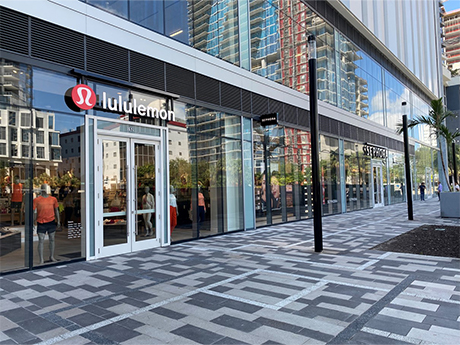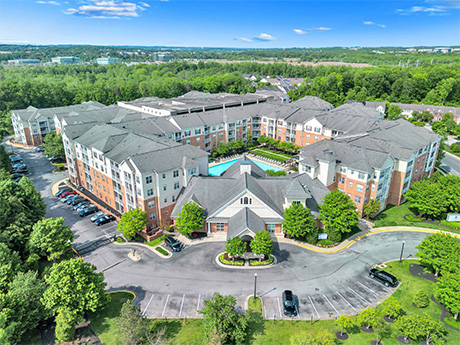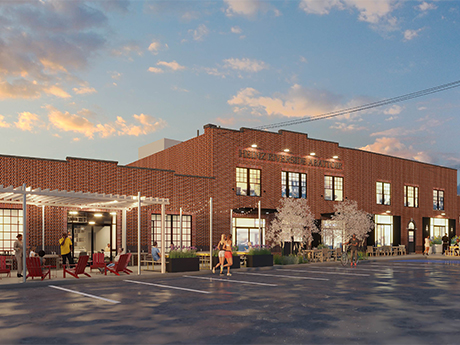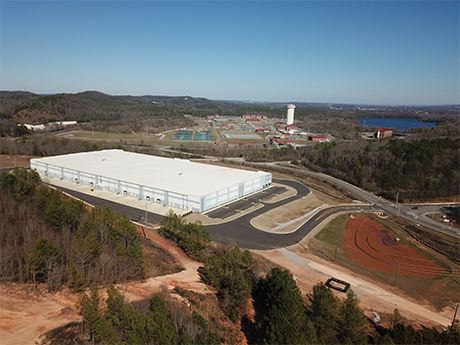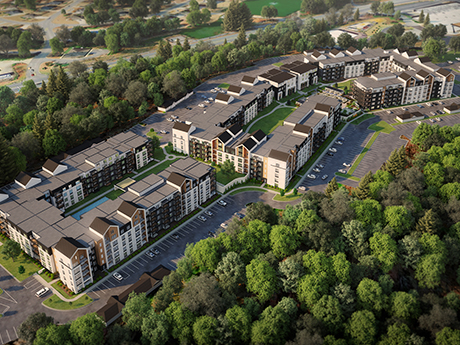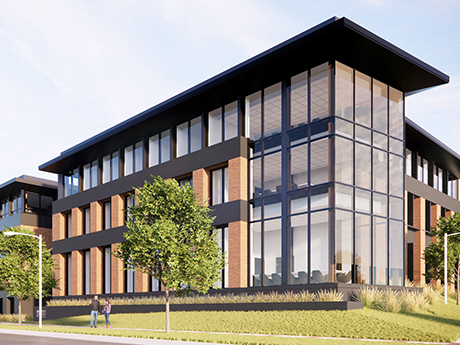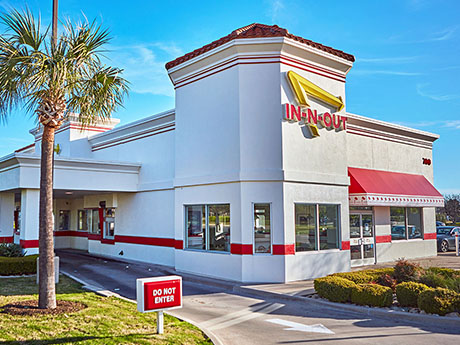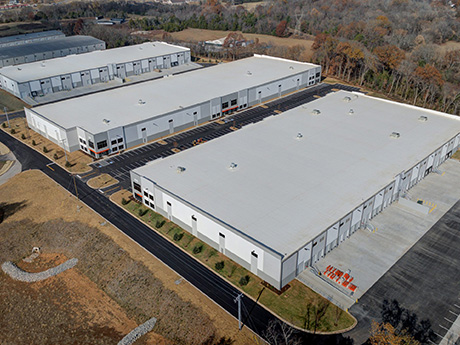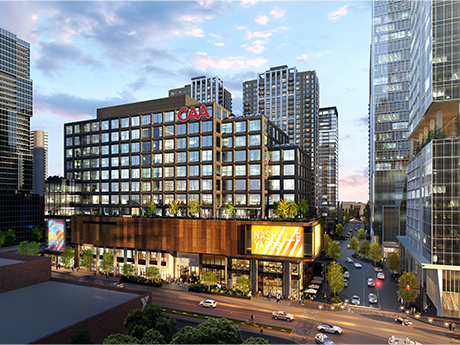The retail sector in South Florida is undergoing adjustments that reflect the region’s dynamic economic landscape and evolving consumer preferences. One notable trend is evident in the restaurant sector, where owners increasingly aim to expand by opening new locations and entering lucrative markets. This trend is primarily driven by consumer spending, particularly the continual growth of Miami’s tourism industry. Visitors directly inject capital into the local economy, leading to increased disposable income that often circulates back through experiential commerce such as restaurant sales. A clear indicator of the local market’s strength is the ongoing rise in rental asking rates, significantly surpassing national averages. A robust 4.6 percent upturn in asking rent this year, as reported by CoStar Group, demonstrates retailers’ ability not just to survive but to thrive in a market with elevated asking prices compared to the rest of the state. This upward trend in rent is accompanied by a low 2.8 percent vacancy rate, according to CoStar data, indicating a competitive landscape where profitable lease opportunities are increasingly scarce for tenants. The retail sector within the restaurant industry continues to thrive, showing significant activity and heightened interest. The influx of high-net-worth individuals and a post-pandemic resurgence in immigration …
Southeast Market Reports
By Christine Espenshade of Newmark Baltimore is an often-overlooked gem of a city along the Northeast Corridor between Washington, D.C., and New York City. This waterfront town is home to two major sports teams, a world-class symphony and art museums that rival those in the best cities around the world. Baltimore is more often referenced as the location for various crime TV shows rather than being known as home to two of the top medical facilities in the world — Johns Hopkins Hospital and the University of Maryland Medical System — Johns Hopkins University, and headquarters for famous companies such as Under Armour, T. Rowe Price and McCormick Spices. The multifamily market in Baltimore is also often overlooked by investors in favor of larger cities. However, to spur the development of top-quality rental products, Baltimore City and Baltimore County offer lucrative property tax abatements for new developments. The region continually sees consistent population growth due to the “eds and meds” nature of the economy, and the lower cost of living when compared to D.C. or Philadelphia attracts a well-educated workforce looking to enjoy the live-work-play lifestyle. The popularity of Baltimore for employers and employees is evident when considering the 35,000 …
Mirroring sentiments expressed at the year-end ICSC conference in New York City, with the national vacancy rate hovering around 5 percent and new concepts anxious to take a foothold in the area, there continues to be tremendous optimism for the retail sector in the greater Baltimore metropolitan region. Although ground-up development projects remain rare locally, several high-profile adaptive projects are in the works that are placing smiles on brokers’ faces because they have something to lease. Value-oriented retailers, together with quick-service restaurant (QSR) concepts, are showing the most activity. Adaptive reuse The redevelopment of the iconic Harborplace festival marketplace (more on that later) is grabbing all the headlines in Charm City, but the adaptive reuse of Baltimore’s Penn Station — the epitome of a transit-oriented development and the renovation of a historic industrial building at Riverside in South Baltimore — are happening now. Beatty Development Group and Cross Street Partners are partnering with Amtrak to transform the train station originally developed in 1911 into a mixed-use project combining 1 million square feet of commercial office, retail and residential space. Destination retail and restaurants are a central core of the program. Urban Pastoral and The Wilhide Family are transforming the 135-year-old …
By Henry Graham of Graham & Co. As a reminder to those who may have missed my colleague Sonny Culp’s article from last year, 2021 and 2022 saw the delivery of more than 10 sizable build-to-suits to the Birmingham/Central Alabama region. Such rapid growth in the industrial sector grabbed the attention of larger industrial developers that have generally allowed Birmingham to fly under the radar. Case-in-point, in the years from 2008 through 2016, the greater Birmingham metropolitan area was essentially devoid of any speculative industrial development. Instead, the pipeline of industrial projects was centered around owner-occupied spaces and the occasional build-to-suit related to the automotive sector or light manufacturing. On the tailwinds of the recent build-to-suit frenzy and COVID-fueled supply demands, Birmingham experienced a flurry of speculative activity in 2022 and 2023 as regional and even national developers like Scannell Properties tested the waters alongside Alabama-based industrial developers. Along a half-mile stretch of Daniel Payne Industrial Boulevard that sits just north of the central business district (CBD) and not far from the intersection of I-65 and I-20/59, four Class A spec buildings came up in rapid succession totaling 737,000 square feet. Two of those buildings are now fully leased …
By Chapman Brown of Marcus & Millichap Once renowned for its industrial prowess, Birmingham is experiencing a dynamic retail renaissance fueled by a convergence of local economic growth, strategic development initiatives and shifting consumer behaviors. As major retail projects come to fruition and submarkets heat up with investment activity, the city is poised for a transformative period that promises to redefine its retail landscape. Birmingham’s retail sector is intricately linked to broader economic trends both locally and nationally. Factors such as population growth, employment rates and disposable income levels significantly influence consumer spending habits and retail demand within the city. Additionally, the rise of e-commerce and changing demographics are prompting retailers and developers to adapt and innovate to stay competitive. These factors, combined with a diverse array of buyers and sellers, are driving retail investment activity. Institutional investors, private equity firms and real estate developers are among the key buyers, attracted by the city’s strong fundamentals and growth prospects. On the selling side, property owners and developers are seizing opportunities to unlock value and redeploy capital into new ventures. Several major retail projects are currently underway, poised to leave a lasting impact on the market. One notable project is The …
By David Wilson of Berkadia Birmingham’s apartment market has softened, which is consistent with trends both nationally and regionally in other Southeastern metros. But the market remains healthy and balanced despite a bump in new construction. With total employment gains exceeding 18,000 in 2023, a substantial jump from the 5,500-person gain in 2022, and unemployment rate falling to 2.2 percent, the Birmingham economy is as strong as it’s been in over 10 years, and the economic outlook is very favorable. The majority of population growth has been in the southern areas such as Shelby County, although a steady delivery of new Class A apartments in downtown Birmingham in recent years, and the opening of a Publix grocery in 2017 on the ground level of the 436-unit 20 Midtown development, is helping the city core to grow. Research by Berkadia Birmingham reveals 12 properties comprising 2,936 units are under construction in the Birmingham area, excluding Tuscaloosa. These properties reflect a cross-section of product types such as a purpose-built student property and an affordable Low-Income Housing Tax Credit (LIHTC) property. Four are in their initial site work phase, while another four are beginning preleasing. New developments In the thriving Highway 280 submarket, …
By Brad Jones of Cushman & Wakefield/EGS Commercial Real Estate Despite ongoing challenges facing the national economy, Birmingham’s commercial real estate landscape remains steady and consistent. Over the past seven years, encompassing both pre- and post-pandemic periods, the overall vacancy rate for Birmingham’s multi-tenant office market has exhibited fluctuations like most markets, ranging from 12.9 percent in 2017 to 19 percent in 2023, according to research from Cushman & Wakefield/EGS Commercial Real Estate. However, for perspective, Birmingham’s year-end vacancy rate of 19 percent remains below the national average vacancy rate of 19.7 percent recorded in 2023, according to research from Cushman & Wakefield. Office leasing activity in Birmingham has maintained momentum, experiencing a notable 12 percent year-over-year increase from 2022. Total leasing activity for 2023 totaled 718,219 square feet. Class A transactions dominated with 564,681 square feet leased, indicating a continued preference for Class A office space (i.e. a flight to quality). This is good news for Class A product in this supposed period of economic slowdown. Office investment sales activity in Birmingham has, however, decelerated in the current economic climate. The impending ripple of debt maturities poses challenges for large institutional owners and creditors. At the same time, it …
Nashville Attracts Big Brands Like In-N-Out While Carving Out Distinct Pocket Neighborhoods
by John Nelson
By Katie Lester of Colliers Nashville’s economy experienced some of the healthiest growth in the nation in 2023, with a job growth rate of 3.7 percent, putting it among the top five of the largest 50 metros. Forecasted by Oxford Economics, overall jobs are projected to grow 1.2 percent in 2024 and by 0.8 percent per year in 2025 through 2028, outpacing the U.S. average of 0.5 percent. Nashville also received high marks from the Urban Land Institute, ranking the “No. 1 Market to Watch” in its 2024 Emerging Trends in Real Estate report. This is the third consecutive year that Nashville has earned the top spot in this ranking, a true nod to the confidence and strength of Nashville’s commercial real estate market. The report credits Nashville and other “Supernova” cities as having above-average levels of economic diversity and high-wage jobs that attract investors’ appeal and confidence in sustaining high growth in the coming years. These fundamentals have been a boon to the retail market and have helped attract new-to-market retail brands to Middle Tennessee. Most notably, after a multi-city, multi-state search over the course of two years, In-N-Out Burger picked Middle Tennessee to locate its Eastern Operations Hub, …
By Jack Armstrong and Joanna Paszek of CBRE The Nashville industrial market remained strong through 2023 despite macroeconomic pressures, fueled by persistent occupier demand and limited availabilities. Occupiers were active in the market with mostly sub-100,000-square-foot requirements, making it vital for owners and developers to consider size segment trends and supply the market based on varying occupier needs. The logistical advantage of Nashville’s geographic location continues to attract occupiers and investors to the market. Three major interstates intersect through the city, and companies can reach 72 percent of the U.S. population within two-day ground delivery. A consistent average of 100 new residents daily and waves of new-to-market companies helped promote a swift post-pandemic economic recovery and illustrate the market’s resilience. An increased presence of electric vehicle (EV) companies is paving the way for significant infrastructure upgrades, bringing high-paying jobs and growing supply-chain demand to support their product distribution. Economic incentives like Tennessee’s FastTrack Program grants for job training and infrastructure development, job tax credits and sales tax exemptions have attracted roughly 2,500 jobs and $2.8 billion of capital investment by EV-related operations to Middle Tennessee since 2020. Together, Nashville’s pro-business environment and status as a place people want to live …
By Stewart Lyman and Robby Davis of Stream Realty Partners Contrary to popular belief, the office market is not dying, particularly not in Nashville. While the market is facing headwinds from the interest rate environment and general economic uncertainty, Nashville has shown resiliency, bolstered by the city’s strong population growth, low unemployment rates, and a vibrant, diverse job market. However, while flight-to-quality has been experienced well before the COVID-19 pandemic, the positive performance of top-tier buildings compared to the rest of the market has accelerated coming out of COVID-19. In 2023, Class A Tier I buildings posted 1.17 million square feet of positive absorption compared to negative absorption of 141,900 square feet and negative 32,267 square feet in Class A Tier II and Class B assets, respectively. Top-tier buildings signed some of Nashville’s largest leases in the past year, such as Creative Artists Agency (CAA) for 75,000 square feet at Nashville Yards, Designed Conveyor Systems for 47,000 square feet at McEwen Northside and JE Dunn for 41,000 square feet at Neuhoff. In the urban core, two of the most high-profile new developments are Neuhoff (Germantown) and Nashville Yards (Downtown), both of which are elevating the tenant experience by delivering best-in-class …


